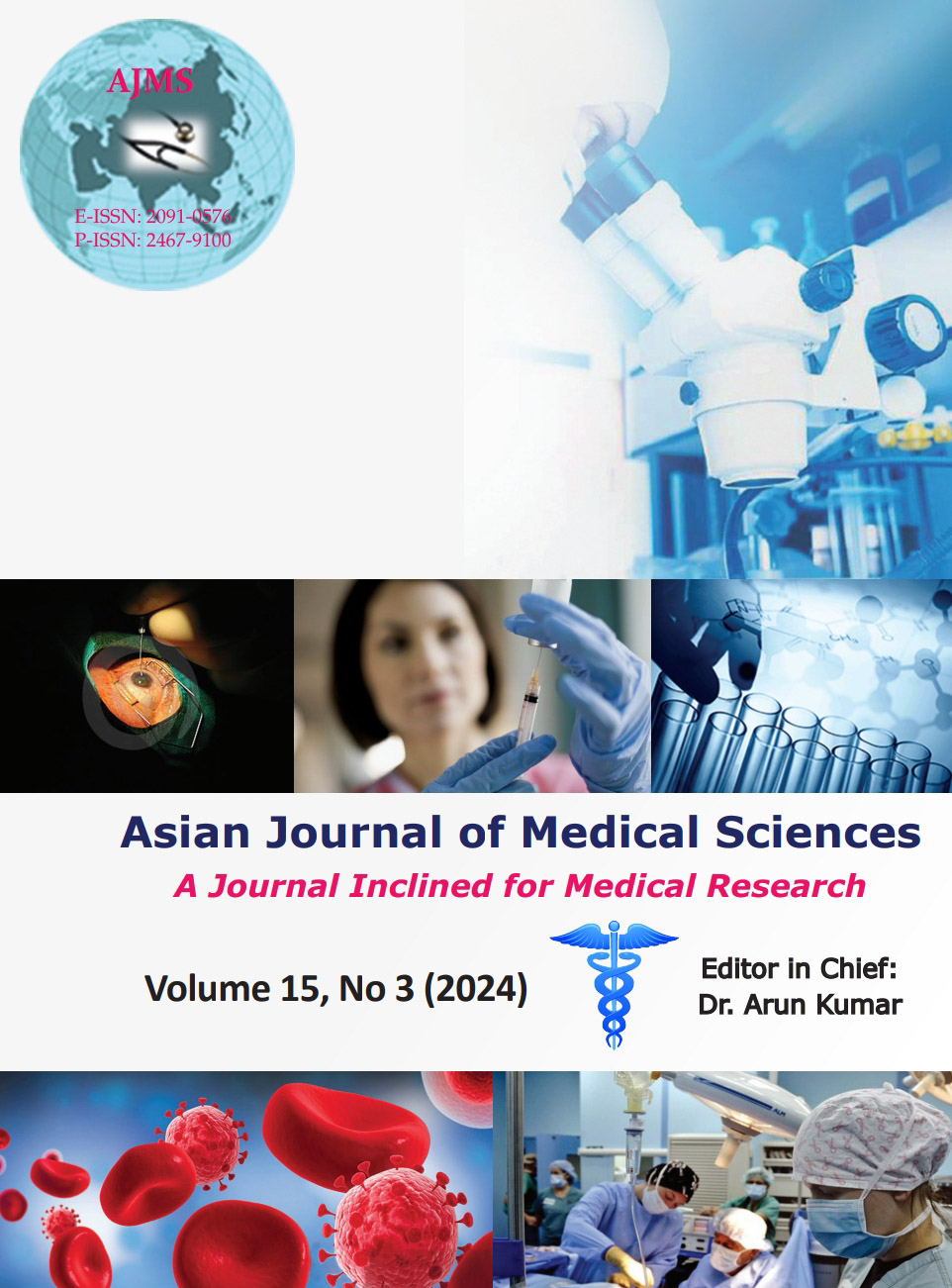DECAF score at admission as a tool to predict clinical outcome in acute exacerbation of COPD
Keywords:
Chronic obstructive pulmonary disease; Dyspnea, eosinopenia, consolidation, acidemia, and atrial fibrillation; Acute exacerbation; SurvivalAbstract
Background: The Dyspnea, Eosinopenia, Consolidation, Acidemia, and Atrial Fibrillation (DECAF) score at presentation is designed to predict the risk of death in patients with chronic obstructive pulmonary disease (COPD).
Aims and Objectives: To study the DECAF score at admission to predict the clinical outcome of the patients during hospitalization for acute exacerbation of COPD (AE-COPD).
Materials and Methods: The study was conducted using a prospective cross-sectional observational study design in a tertiary care center in South India from April 2022 to March 2023. Patients were recruited based on specific inclusion and exclusion criteria. The data corresponding to the five variables of the DECAF score was obtained, and the relation to outcome measures such as survival, ventilation, and duration of stay was measured.
Results: Two hundred consecutive patients were assessed. Based on the DECAF score, 102 patients (51%) were classified as low-risk, and this group had no mortalities. In the intermediate-risk group, the mortality rate was 7.4%; in the high-risk group, the observed mortality rate was 38.6%. The differences noted were significant statistically. Higher dyspnea grade as measured by extended Modified Research Council criteria was related to DECAF score was significant and with the outcome.
Conclusion: Our study shows that the DECAF score at the initial presentation can be used as a reliable tool to predict the outcome of AE-COPD. Dyspnea grading can be used to predict mortality indirectly.
Downloads
Downloads
Published
How to Cite
Issue
Section
License
Copyright (c) 2024 Asian Journal of Medical Sciences

This work is licensed under a Creative Commons Attribution-NonCommercial 4.0 International License.
Authors who publish with this journal agree to the following terms:
- The journal holds copyright and publishes the work under a Creative Commons CC-BY-NC license that permits use, distribution and reprduction in any medium, provided the original work is properly cited and is not used for commercial purposes. The journal should be recognised as the original publisher of this work.
- Authors are able to enter into separate, additional contractual arrangements for the non-exclusive distribution of the journal's published version of the work (e.g., post it to an institutional repository or publish it in a book), with an acknowledgement of its initial publication in this journal.
- Authors are permitted and encouraged to post their work online (e.g., in institutional repositories or on their website) prior to and during the submission process, as it can lead to productive exchanges, as well as earlier and greater citation of published work (See The Effect of Open Access).




